
M45: The Pleiades Star Cluster

Hubble Views Final Stages of a Star’s Life

NGC 7129 and NGC 7142

Celebrating Spitzer's Sweet Sixteen

M27: Not a Comet
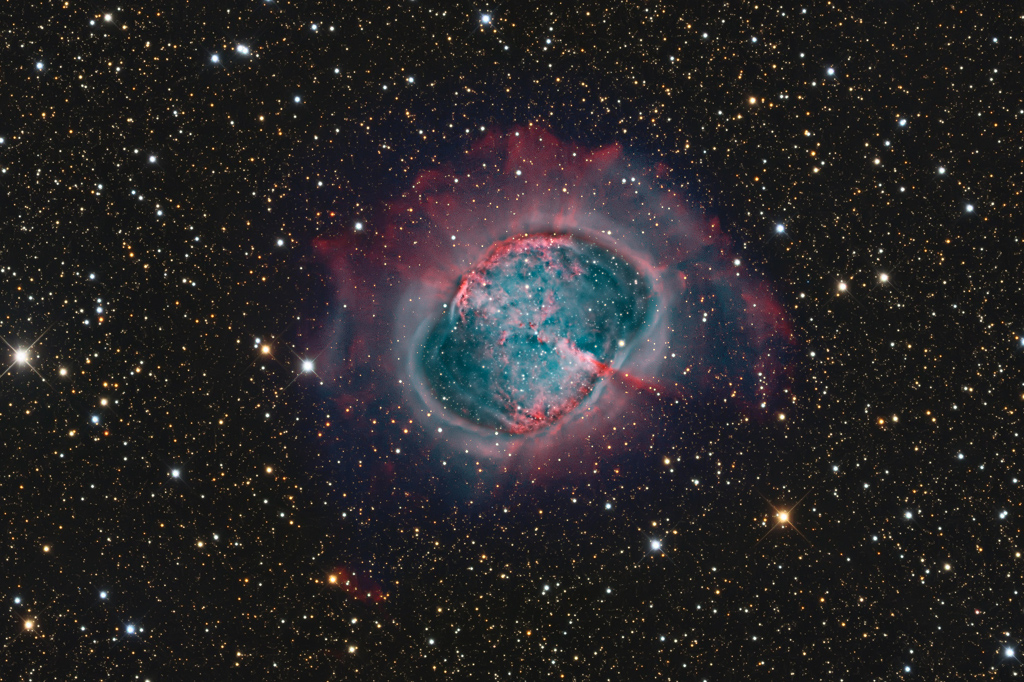
Lifting the Space Launch System Core Stage Into Place

Messier 61 Close Up
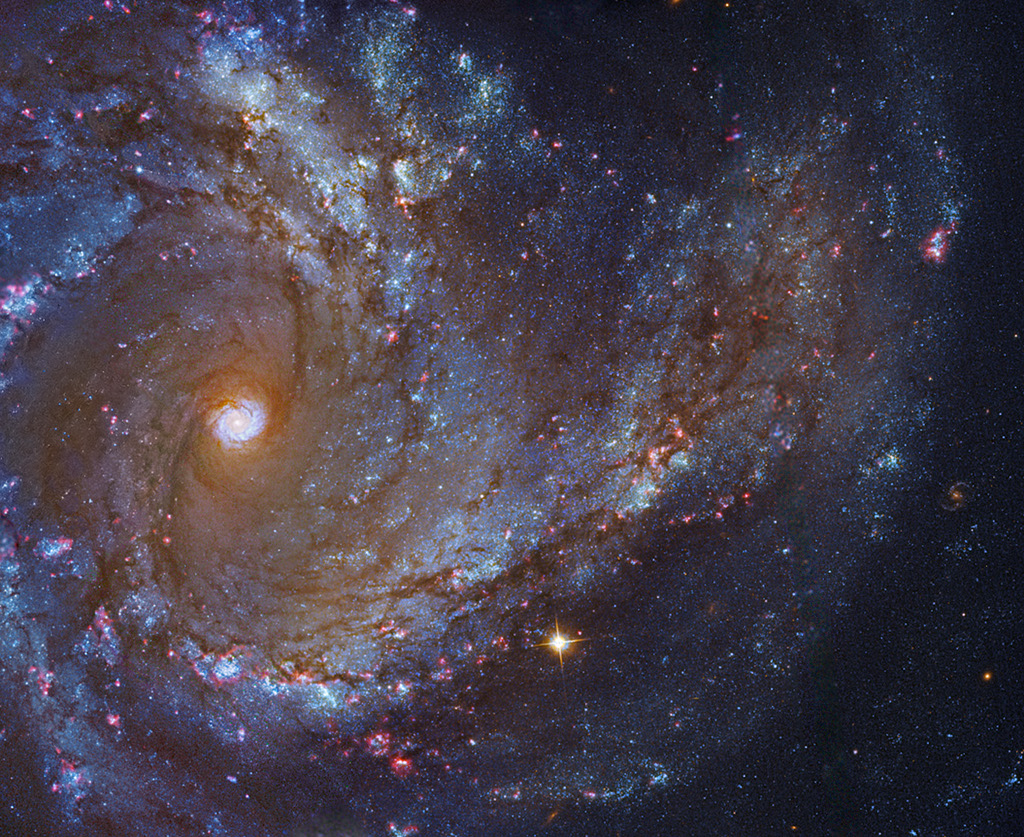
Astronaut Andrew Morgan Performs His First Spacewalk

Christine Darden: From Human Computer to Engineer

Leaving Earth

Hubble Captures Dynamic Dying Star

Recipe: Hydrating CBD Smoothie
Staying hydrated is one of the best things you can do for your body. From brighter skin to improved brain function, even weight control, it’s obvious we need adequate fluids to maintain our health. Sometimes, you need more than just water, which is why electrolytes are so important.
Here’s a hydrating smoothie recipe I created to help your body keep doing what it needs to do. I’ve boosted it with hydrating vegetables such as cucumbers, and added electrolyte-rich fruits and coconut water to keep it cool and refreshing. The addition of CBD is like the icing on a healthy cake.
Makes 1 smoothie
- 1/2 cup cucumber, peeled and sliced
- 1 banana, ripe and frozen
- 1/2 an avocado, diced
- 1/4 cup fresh mint
- 1 medium lime, juiced (approximately 2 tablespoons of juice)
- 1 cup coconut water
- 1 personal serving of CBD
- Ice (optional)
Add all the ingredients, blend and enjoy.
The post Recipe: Hydrating CBD Smoothie appeared first on CBD Snapshot.
from CBD Snapshot https://ift.tt/2ZdbwQ0
Wildfires in the Brazilian Rainforest Creating Cross Country Smoke

Nearby Spiral Galaxy NGC 4945

A View of the National Space Council

The Orion You Can Almost See
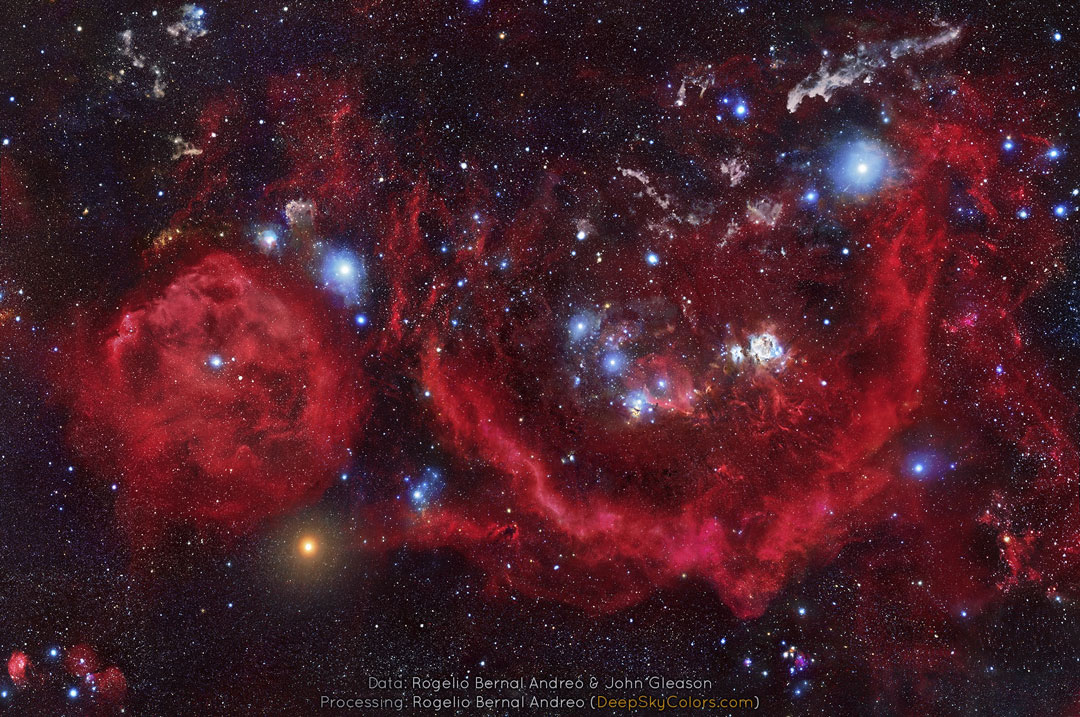
SpaceX Dragon Crew Emergency Evacuation Rehearsal

Synthetic CBD Can Be Dangerous—How to Tell if You’re Buying the Real Thing
With the explosion of products containing hemp-derived CBD in the last few years, many less-than-honest players found ways to flood the market with “CBD oil” that is a modern-day equivalent of snake oil—not necessarily dangerous but definitely ineffective. In some cases, a bottle labeled as CBD oil is just a few crushed vitamins and supplements mixed with olive oil.
It seems impossible but there are some companies out there selling CBD oil, promising improved health, less pain and the myriad other claims they make, that is actually synthetic CBD oil—no different from the potentially lethal forms of synthetic cannabis sold on the street.
In November 2018, Consumer Reports (CR) published an article about dangerous chemicals found in popular over-the-counter (OTC) CBD products. Based on testing conducted by Virginia Commonwealth University, CR reported that Diamond CBD, with locations in England and the U.S., sells CBD products made by three popular companies over the Internet that contain a compound called 5F-ADB, which is a synthetic form of cannabis also found in K2 and Spice.
Drug Overdoses in the U.S.
The Centers for Disease Control tracked all fatal drug overdoses from 1999 to 2017, and in that time it reported a four-fold increase in ODs. In addition to tracking the number of deaths due to overdose, the CDC keeps tabs on which drugs are responsible for them. Unheard of in 1999, overdoses from synthetic cannabis—both marijuana and CBD—is now keeping pace with ODs from benzos and opioids. Stories abound of swaths of people—most between the ages of 12 and 30—being rushed to emergency rooms, suspected of overdosing on synthetic cannabis.
Mainstream media began reporting more widely about the increase of synthetic cannabis use in 2015, with an uptick between late 2017 and mid-2018 as usage really took off. However, the National Institute on Drug Abuse says synthetic cannabis use dates back to 2008. In fact, it claims 11,406 visits to emergency rooms in the U.S. during 2012 were the result of synthetic cannabis.
What Is Synthetic Cannabis?
Synthetic cannabinoids are created in a lab and bear no chemical resemblance to the cannabis plant. It’s a group of chemical substances that are supposed to mimic the effects of the natural cannabinoids found in the cannabis plant. These synthetic products have been cleverly marketed as safe or harmless products, or even as safer alternatives to real cannabis.
No two types of synthetic cannabis are the same, and in most cases the chemical makeup is unknown. It’s estimated there are hundreds of compounds that can potentially go into creating these synthetic products. To the untrained eye, it’s easy to see how someone could be fooled into believing a synthetic is the real deal.
Synthetic cannabis is generally a mixture of different plants, spray painted green. Four telltale signs that your cannabis is fake include:
- The package has what looks like ground-up plant material rather than cannabis buds.
- You’ll notice a chemical smell. Cannabis—regardless of the strain—has a distinct smell and it smells like something you’d find in nature.
- Real cannabis has a stickiness to it, thanks to naturally occurring resin. After handling the fake stuff, your fingers won’t be sticky.
- Synthetic cannabis is one or two shades of green. Conversely, natural cannabis is green with hints of yellow, red, orange, blue and purple.
What Are the Risks Involved with Synthetic Cannabis?
Although the goal is to have these chemical substances mimic the effects of cannabis, the synthetic versions are highly dangerous and can cause many serious health issues. Because the list of possible chemicals can vary from one street-level manufacturer to another, the risks also vary and are ever-changing. Some health risks include:
- Severe anxiety, agitation and paranoia
- Tachycardia (in excess of 100 beats per minute)
- Hypertension
- Muscle spasms and tremors
- Nausea and vomiting
- Severe bleeding due to blood not clotting
- Poor coordination/gait
- Seizures
- Hallucinations
- Disorientation
- Psychosis
- Suicidal thoughts and behaviors
- Coma
- Death
In addition to being sold in “flower form,” synthetic versions of cannabis are also sold as e-cigarettes and extracts for vaping, such as waxes and oils.
Common Names for Synthetic Cannabis
You’re probably familiar with the names K2 and Spice, but there are other names for synthetic cannabis, and they may vary depending on the region. In some cases the street name may be the same or very similar to real cannabis strains:
- 24k monkey
- Ace of Spades
- Amsterdam Gold
- Atomic Blast
- Atomic Bomb
- Berry Blend
- Big Bang
- Herbal Incense
- Blue Berry Yum Yum
- BrainFreeze
- Buzz Haze
- California Dreams
- Cowboy Kush
- Cobra King Kush
- One Love
- Orange Kush
- Pandora’s Box
- PEP Spice
- OG
- Potpurri (sic)
- Purple Diesel
- Purple Haze
Synthetic Cannabis: Just Say No
If you’re concerned about synthetic CBD, check out the below tips before making a purchase. As always, consult your doctor before introducing CBD to your wellness routine.
Buy from a Dispensary
The safest way to ensure you’re getting real cannabis is to buy from a dispensary. Dispensaries are required by law to sell extracts derived from cannabis plants. Dispensaries can lose their license to sell cannabis and face huge fines if caught. Manufacturers caught making extracts with anything other than cannabis are subject to prison time—even if no one was harmed.
Request the Product Lab Report
No matter where you purchase CBD, you have the right to request a lab report. If the company is unwilling to provide one or insists the information is proprietary, that’s a big red flag.
If you or someone you are with has consumed synthetic CBD, don’t wait for symptoms to appear before seeking medical attention.
The post Synthetic CBD Can Be Dangerous—How to Tell if You’re Buying the Real Thing appeared first on CBD Snapshot.
from CBD Snapshot https://ift.tt/2TLN5Dc
Animation: Spiral Disk around a Black Hole

3D Printing and the Future of Aeronautics

Can CBD Treat Anxiety?
When faced with a stressful situation, our bodies respond by releasing a flood of stress hormones. These hormones produce a set of well-orchestrated physiological changes designed to help us cope with perceived threats to our safety and welfare.
Although we don’t normally think of fight-or-flight as a positive response, it’s a vital evolutionary adaptation for self-preservation, which helps us survive, make better choices and be motivated to act.
But the problem is that we’re now living in urban jungles, not wild ones. The threat of being eaten by a wild predator is pretty low. Yet many of us continue to experience a continued fight-or-flight response with persistent feelings of anxiety that can lead to anxiety-related disorders.
Anxiety Disorders and Treatments in the U.S.
In the U.S., an estimated 18 percent of people ages 18 and older, suffer from anxiety-related disorders. That’s roughly 40 million people.
For many, managing this anxiety means taking a cocktail of pharmaceuticals, including selective serotonin reuptake inhibitors (SSRIs) such as Prozac and Zoloft, and tranquilizers such as Valium and Xanax.
Although these drugs can be effective for many, not everyone has a good experience using them. For many patients, the range of debilitating side effects are often worse than the actual anxiety; others simply don’t see much improvement at all. In addition, especially in the case of tranquilizers that fall in the benzodiazepine class of drugs, these medications can be highly addictive, causing a secondary set of problems for many of these patients.
No wonder that many people suffering from anxiety disorders are looking for non-addictive, effective and more natural alternatives such as cannabidiol (CBD).
Cannabidiol for Treating Anxiety
A growing body of anecdotal evidence exists for using CBD to treat symptoms of anxiety and stress. The internet is full of reviews and comments along the lines of, “CBD helps me manage my anxiety” and, “Since using CBD I’m less stressed and anxious.”
However, there is also a growing body of evidence in scientific literature that suggests CBD does show promise as an anxiolytic, the scientific name for any compound that has anti-anxiety properties.
For example, in a 2015 study, researchers reviewed 49 primary preclinical, clinical, and epidemiological studies to assess CBD’s potential as a treatment for anxiety-related disorders. They found that the data supported the notion that CBD is a potentially powerful anti-anxiety treatment when administered as needed—especially for the following conditions:
- Generalized anxiety disorder (GAD)
- Panic disorder
- Social anxiety disorder (SAD)
- Obsessive–compulsive disorder (OCD)
- Post-traumatic stress disorder (PTSD)
How CBD Works
To date, most of the research dealing with CBD for anxiety is based on pre-clinical and animal studies. However, an increasing body of data describing the anxiolytic (anti-anxiety) effects of CBD in humans is starting to emerge, giving scientists insight into how CBD might help people suffering from anxiety disorders.
Scientists theorize that the anti-anxiety effects of CBD is due to:
- the way it interacts with the neurobiology of the brain
- the way it affects serotonin levels
- because it may have the ability to help regenerate neurons in areas of the brain often associated with anxiety and mood
Neurobiological Interaction
One way scientists believe CBD can help with anxiety is how it interacts with the limbic and paralimbic brain areas—the areas of the brain which are thought to be associated with mood and emotional processing.
A small double-blind study of 10 participants suffering from social anxiety disorder (SAD) tested this theory by using single-photon emission computerized tomography (SPECT) imaging that measures regional cerebral blood flow patterns in the brain. They found that, after the administration of a single 400 mg dose of orally administered CBD, participants reported a marked reduction in feelings of anxiety. Moreover, the SPECT imaging confirmed their hypothesis showing that the anxiolytic effects of CBD is associated with changes in the functional activity of brain areas implicated in the processing of anxiety.
A similar study looked at how participants with SAD performed in a simulated public speaking scenario after being given CBD. As in the other study, participants also reported reduced feelings of anxiety, and objective anxiety measures such as heart rate and blood pressure confirmed this. They concluded that CBD has the ability to significantly reduce anxiety, cognitive impairment and discomfort.
Serotonin Interaction
Scientists believe that the neurotransmitter serotonin is one of the major players in mood disorders. This is why medications called serotonin reuptake inhibitors (SSRIs) such as Prozac and Zoloft are believed to help reduce feelings of anxiety.
SSRI’s work by blocking the reabsorption of serotonin in the brain, in turn increasing its availability in the synaptic space. This helps brain cells transmit more of the serotonin signals that reduce anxiety and boost mood.
In an animal study, researchers found that CBD boosts serotonin signaling via the same 5-HT1A subtype of the serotonin receptor that SSRI’s target. What’s more, they even found that CBD may affect serotonin faster than SSRI’s. “The fast onset of antidepressant action of CBD and the simultaneous anxiolytic (anti-anxiety) effect would solve some of the main limitations of current antidepressant therapies,” according to the study.
Hippocampal Neurogenesis
The limbic system, which includes the hippocampus, is thought to play a vital role in emotional processing and mood. Brain scans of patients suffering from anxiety often show that they have a smaller hippocampus, and the severity of the symptoms relating to the severity and duration of the disorder.
Successful treatment of anxiety disorders is often associated with the birth of new neurons (neurogenesis) in the hippocampus. And because of its similarities with SSRI’s, CBD also shows the potential of helping to regenerate neurons in the hippocampus, which leads some scientists to believe this could be one of the mechanisms in which it can help treat anxiety disorders.
How to Use CBD for Anxiety
Because CBD can have some contraindication and doesn’t interact well with certain medications such as certain anti-epileptics and blood thinners, it isn’t a good choice for some. That is why, before using CBD for anxiety, it’s important to speak to your treating physician first.
It’s also important to use a high-quality product and figure out your personal ideal serving size. A study conducted in the ’90s found that servings starting at around 2.5 and going up to 5 and even 10 mg per kilogram of weight significantly increased the anxiolytic effect of CBD. However, CBD at a dose of 20 mg per kilogram was no longer effective, which means that more is not necessarily more. Using a CBD dosage calculator such as this one from ID Weeds or CBD Oil Users can help you figure out the right serving size for you.
The post Can CBD Treat Anxiety? appeared first on CBD Snapshot.
from CBD Snapshot https://ift.tt/2OYjW9j
Supplement Fatigue? These Are the 4 Dailies You Should Know About
No question: CBD is the No. 1 supplement that I recommend in my practice. But it’s certainly not the only one. As a dietitian, my ultimate goal is for my clients to meet all their nutritional needs through food. It’s not always possible, so once we’ve optimized their diet—think lean protein, tons of greens, healthy fats and indulgences when needed—I also like to give them additional support with supplements.
I’ve learned both personally and professionally that too many supplements (pills, powders, tinctures, etc.) will lead to a cupboard of unused products.I’m very deliberate with my suggestions because otherwise it’s overwhelming. I’ve narrowed my list down to four favorite natural supplements.
1. CBD
My top choice is CBD. I’ve found that most of my clients have positive experiences with a CBD supplement in the morning or evening. I only recommend a full-spectrum, organically grown product.
2. Vitamin D
Vitamin D is another supplement I recommend often. This super cool vitamin has been linked to a boosted immune system, healthier bones and even increased brain health.
Vitamin D is often fortified (meaning added to) certain foods such as milk. It’s also found in egg yolks, canned fish or even through sun exposure. But between the limited food choices and the challenge with getting enough healthy sun exposure (always wear sunscreen!), it’s hard to meet those needs. That’s why I recommend my clients supplement with vitamin D.
3. Magnesium
I like to think of magnesium as my secret weapon. This awesome mineral does so much for our bodies yet so many people don’t get enough.
Magnesium is a well-known natural relaxant. It helps calm your mind, relax your muscles and can help with digestive woes. It’s found in bananas, spinach and even chocolate. But, even with those with incredibly healthy diets, I still find that magnesium before bed can be incredibly beneficial.
4. Probiotic
Last but certainly not least is a probiotic. It seems strange to add bacteria to our bodies, but the truth is that our gut is filled with bacteria. We want to have more “good” bacteria than bad.
Research shows that over 70 percent of your immune system is based out of your gut, so it’s a big enough reason to keep it as healthy as possible. Taking a probiotic doesn’t replace eating foods that are good for your gut, so I still ask my clients to eat good quality yogurts or kefir, kimchi or kombucha.
The post Supplement Fatigue? These Are the 4 Dailies You Should Know About appeared first on CBD Snapshot.
from CBD Snapshot https://ift.tt/2Z6mYvT
5 Industry Insights on the Future of CBD
The CBD category boom has left a wide range of industry experts curious as to the future of business sectors that CBD has the potential to disrupt. Recently, Marijuana Business Daily Magazine debuted the Hemp Industry Daily Conference alongside its annual MJBizCon NEXT, both held in New Orleans from June 12-14, 2019.
Although the Hemp Industry Daily Conference sessions focused specifically on the hemp and CBD industries, MJBizCon NEXT 2019 also offered valuable insights into the fast-growing CBD sector. These insights primarily target business owners and industry professionals, but they also offer CBD consumers a glimpse into where the market, regulations and products are heading.
1. CBD industry growth has surged faster than regulators can keep up with.
The 2018 Farm Bill reclassified hemp as an agricultural product from its previous status as a Schedule I controlled substance alongside other cannabis genus plants. However, according to Michael Bronstein, president of the American Trade Association for Cannabis & Hemp, in his lecture session “Where Are We Now? The Hemp Legal Landscape,” the 2018 Farm Bill did not “legalize” hemp so much as it legalized the regulation of hemp.
This means states can now submit regulatory plans for approval to the federal government to create the framework under which CBD and hemp businesses can legally operate. But the industry and government still have catching up to do to better regulate new and existing CBD products and businesses as the sector continues to boom.
In one major step forward, the FDA held its first-ever public hearing on CBD products on May 31, 2019. There, industry experts, business owners, and CBD users came forth with their research, opinions and case studies. Attendees and FDA regulators discussed why certain regulations regarding CBD should or shouldn’t be put into place as this new regulatory framework takes shape.
2. The industry needs increased more accurate CBD testing and labeling.
Per federal regulations, hemp and its byproducts, including hemp-derived CBD, sold in the U.S. market cannot contain a THC percentage beyond .3 percent. But without proper regulations in place, CBD business owners have struggled with certain ancillary business needs, such as banking and product testing.
Lack of adequate product testing means that products have been flooding the market, but the label claims don’t always match the chemical makeup of the product itself. Although some mislabeling could be mistakes or careless errors, others could be more intentional. And, bottom line, all have the potential to be harmful to consumers if they are unaware of the quantity or quality of CBD and THC in these products.
3. Hemp laws still vary by state, which can impact CBD sales and regulations.
The 2018 Farm Bill paved the way for states to develop their own regulatory framework for hemp-derived CBD production and distribution. But this also leaves business owners and consumers to deal with a patchwork of regulations.
In other words, in one state, CBD regulations may amount to little more than lax enforcement of the federal rules currently in place. One state over, however, CBD retailers may face police raids and seizures of product even though their businesses operate legally by federal guidelines.
Throughout the conference, industry experts voiced concerns that this sort of state-by-state patchwork regulatory system could cause complications for interstate commerce on the business end. As for consumers, patchwork regulations could impact CBD consumption when traveling between states, as one Disney World visitor recently learned the hard way.
4. CBD will impact a wide range of industries, likely inspiring major corporations to jump onboard.
As regulators hammer out legal frameworks, more businesses are joining the CBD push—including major corporations in the food and beverage and consumer packaged goods spaces. Ben & Jerry’s has already announced its intention to develop a CBD ice cream, and retailers Kroger and CVS have announced they will carry CBD products in their stores in select states.
Fear that the industry will “sell out” is a common reaction to corporations joining the CBD movement. But on the positive side, involvement from major companies can bring a host of other benefits to this still fledgling industry:
- Easier and increasingly wide-ranging access to CBD products at retail, both brick-and-mortar and online
- Potentially more cost-effective alternatives, if mass-produced in existing corporate facilities
- An influx of research and development capital into the industry, particularly for startups and corporate incubators
- Increased lobbying influence for state and federal government agencies
As larger companies join the fray, the CBD industry continues to see new problems and solutions arise, while regulators—and consumers—work to keep up.
5. CBD has potential as an alternative treatment option to substance abuse and addiction, including opiates.
Opiates remain a common treatment option for individuals suffering from chronic pain and other ailments, but opiates have also become the leading driver of drug overdoses in the U.S. This has left survivors, victims, their loved ones and caretakers desperate for solutions to this potentially life-threatening addiction.
Born from this need for an alternative, many CBD-related success stories stem from individuals who experimented with and improved their quality of life by replacing opiates and other habit-forming medications with CBD products. Many CBD small business owners perusing the conference’s showfloor attended to gather the data and industry connections they needed to bring their products to market.
The first annual Hemp Industry Daily Conference united CBD industry enthusiasts from around the globe and brought forth an exciting array of industry insights to see CBD well into its bright new future.
The post 5 Industry Insights on the Future of CBD appeared first on CBD Snapshot.
from CBD Snapshot https://ift.tt/2KSLZBT
Hubble’s Portrait of Star’s Gaseous Glow

The Elephant s Trunk Nebula in Cepheus
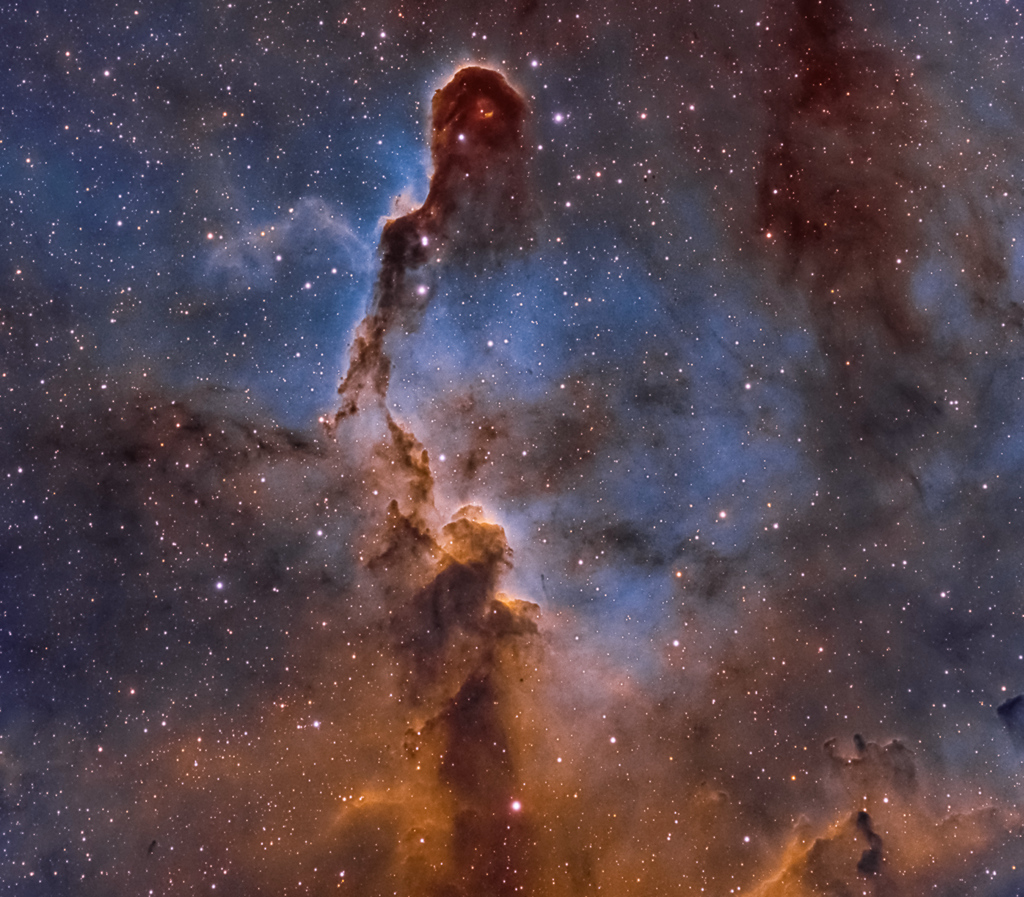
NASA and SpaceX: Dragon Crew Extraction Rehearsal

Studying How Arctic Wildfires Change the World

Saturn Behind the Moon
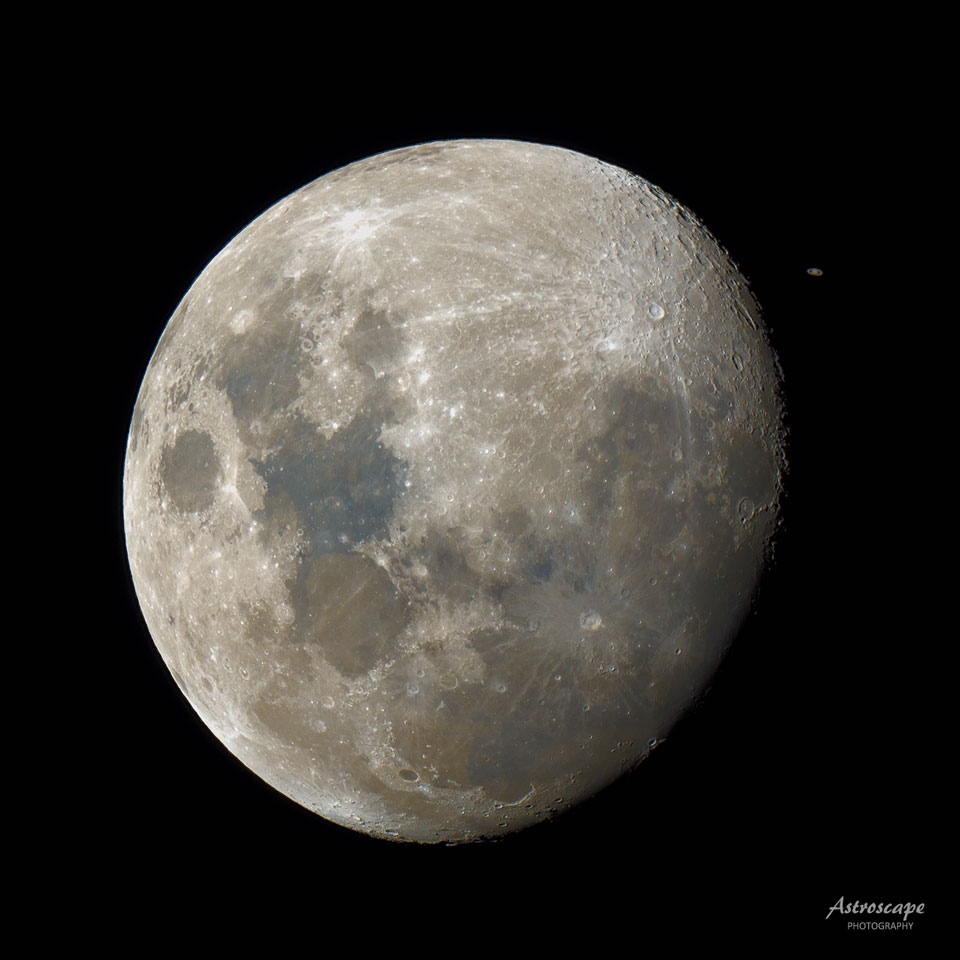
The Future of Wellness Has Deep Roots in Our Ancient Past
For most of human existence—thousands upon thousands upon thousands of years—people have relied on the Earth’s natural medicines. We’ve used answers from the soil to help ward off disease, fight infection, ease pain and enhance well-being.
It’s only more recently—in the last couple hundred years, really—that laboratory-manufactured medicines became a go-to source for health. The tide may now be shifting again. Along with a surge in individuals seeking to live more sustainable, ecological lifestyles has come a public awakening to the realities of the modern medical paradigm pushed by Big Pharma.
The response? Plant-based alternatives to pharmaceuticals are rising in popularity. Every day, more people are thinking outside the pill bottle and looking for remedies that are grown rather than manufactured in labs.
These natural answers may prevent health issues, save money and avoid the sometimes negatives effects of pharmaceuticals.
Nutritionists and health experts have been pumping new life into the age-old wisdom of using food as medicine and preventative treatments. Emerging studies of nutrigenomics seek to understand the causal relationship between nutrients and their effect on the human body.
Another attractive aspect of favoring natural remedies over manufactured medicines is cost savings. A recent report from QuintilesIMS revealed patients in the U.S. will increase their spending on prescription medicine by about 4-7 percent, totaling between $580 billion to $610 billion by 2021. Being able to use remedies found in local health food stores will drive savings for many families.
Often, plant-based remedies also come without the laundry list of side effects that often accompany prescription medicine. According to research published by Dr. Donald Light, a fellow at Harvard University’s Edmond J. Safra Center of Ethics, “even properly prescribed drugs cause about 1.9 million hospitalizations a year. Another 840,000 hospitalized patients are given drugs that cause serious adverse reactions for a total of 2.74 million serious adverse drug reactions.” In fact, Light says, prescription drugs have a one-in-five chance of causing serious reactions after they have been approved.
The emerging field of ethnobotany seeks to pioneer new applications for plants to be used in the treatment and prevention of chronic illness and disease. Some of these applications are new discoveries, while others are centuries-old remedies.
According to a 2016 article in the Journal for Evidence-based Complementary and Alternative Medicine, “it is estimated that there are approximately 500,000 to 750,000 species of higher plants existing on earth and less than 10 percent of them are examined for their biochemical constituents.” In other words, Earth’s medicinal bounty is only beginning to be discovered.
Experts in the health field and wellness-minded families alike continue to gravitate toward alternative, natural remedies. In November 2018, market research firm Grand View Research reported that “complementary and alternative medicine market size is expected to reach a value of $196.9 billion by 2025.”
What does all of this mean for the future of medicine? Certainly, doctors and researchers are taking a closer look at the impact natural alternatives have on the human body as they pursue avenues toward greater public health. As science evolves, patients can be encouraged to explore their options as health care consumers to select the practices and products that most closely align with their individual needs and lifestyles.
This article originally appeared in the May/June 2019 issue of CBD Snapshot. Never miss a story; subscribe today
The post The Future of Wellness Has Deep Roots in Our Ancient Past appeared first on CBD Snapshot.
from CBD Snapshot https://ift.tt/2YQUHug
Recipe: Dreamsicle CBD Smoothie
This smoothie recipe brings back childhood memories of eating creamsicles in the springtime. This easy-to-make version is a whole lot healthier for you, though. The oranges provide a significant amount of vitamin C, which can help boost your immune system, your skin and collagen production as well as support your endocannabinoid system. The CBD component can come in the form of oil or powder. Consult your doctor before beginning a CBD regimen.
Makes 1 smoothie
- 2 oranges, peeled
- 1/2 banana (fresh or frozen), peeled
- 1 teaspoon vanilla extract
- 1 cup unsweetened almond milk (or milk of your choice)
- 1 person serving of CBD
- 1/2 cup ice cubes
Add all ingredients to a blender and mix until smooth. Add the ice and blend again for 15 seconds. Serve immediately.
This article originally appeared in the May/June 2019 issue of CBD Snapshot. Never miss a story; subscribe today
The post Recipe: Dreamsicle CBD Smoothie appeared first on CBD Snapshot.
from CBD Snapshot https://ift.tt/2N04cQl
Can CBD Help You Sleep?
Roughly 35 percent of Americans get less than the recommended seven hours of sleep per night, and about 30 percent of American adults have symptoms of insomnia, In other words, for many people, sleep doesn’t come easy.
If you have problems with sleeping or struggle with symptoms of insomnia, you may have heard that cannabidiol (better known as CBD) could help you get a good night’s rest. We know that CBD has a variety of potential health benefits, including relieving the symptoms of anxiety and stress, which are often the root cause of many sleeping problems. But is CBD oil effective for helping treat insomnia, or could it make things worse?
Causes of Insomnia
According to the Mayo Clinic, the most common causes of insomnia is stress and anxiety. Worrying about work, health, finances and family can cause a great amount of distress, make your mind spin and make it difficult to fall asleep at night. Similarly, feelings of anxiety or even more serious disorders such as post-traumatic stress disorder can cause insomnia, and things such as sleep apnea (periodic pauses in breathing) can all interrupt sleep.
In the long run, a lack of sleep can affect quality of life and lead to decreased performance, slowed reaction time and other mental disorders such as depression or anxiety that makes the situation worse. In some cases, long-term sleep deprivation can even increase the risk of physiological conditions such as high blood pressure and heart disease.
Can CBD Help You Sleep?
Although the scientific research regarding CBD for sleep is still in its infancy, with most studies thus far centering on animals, preliminary data shows potential for CBD oil as an effective natural remedy to help ease the symptoms of insomnia.
Scientists believe \ one of the main reasons why CBD helps with sleep is because of how it interacts with our endocannabinoid system (ECS) and helps us deal with stress and anxiety.
CBD and Anxiety
Because CBD has a balancing effect on the ECS, it may help modulate and maintain a state of homeostasis in the body. Additionally, CBD may also prevent the breakdown of anandamide (often referred to as the “bliss molecule”), one of the body’s major endocannabinoids synthesized in areas of the brain that are important in mood, memory, motivation and higher thought processes. Anandamide also exhibits both anti-anxiety and antidepressant properties, playing and important role in helping manage and reduce feelings and symptoms associated with anxiety disorders.
So, when our bodies are in a state of balance with an abundance of our own endocannabinoids, which produce states of heightened happiness, not only do we respond better to stressful situations, but we are also going to hit the reset button faster.
That is why using CBD for sleep could be particularly helpful for people who experience sleeping difficulties due to anxiety. In a recent study, scientists investigated the potential clinical application of CBD as a treatment option for anxiety and difficulties with sleep in a sample of 72 adults suffering from these issues. They found that within the first month, anxiety scores decreased in as many as 79.2 percent of the participants and remained steady throughout the duration of the study. Similarly, sleep scores improved in 66.7 percent of participants in the first month, though they seem to fluctuate over time.
CBD and REM Sleep
A compounding issue, many people have feelings of anxiety and negativity about the sleep problem itself, which creates a vicious circle: the less you sleep, the worse you feel, which causes less sleep, and so on. The reason for this is due to something called rapid eye movement sleep or REM sleep for short.
REM sleep is the sleep stage that is thought to benefit learning, memory, physical and emotional health. Researchers have long theorized that REM sleep contributes to core features of cognitive dysfunction and anxious depression. A lack of REM sleep is therefore often associated with biased memory processing that can lead to negative self-judgements, anxiety and depression. In a recent review study, researchers found that CBD may not only have therapeutic potential for the treatment of insomnia, but it may also promote REM sleep, reducing many of the negative psychological effects of sleep deprivation.
Should You Use CBD for Sleep Issues?
Ironically, many people actually take CBD to help them feel more alert and focussed. So how can you use CBD to help you fall asleep?
The secret seems to be in the amount of CBD you take. Although there is fairly little published research regarding serving sizes, what we do know is that it seems that higher doses of CBD have a calming effect, and lower serving sizes of CBD have a stimulating effect for the average person.
However, one aspect muddying the waters when it comes to measuring intake CBD for sleep disorders depends on whether the person has a normal sleep rhythm or a sleep disorder.
In an early study on the effects of CBD on sleep, researchers found that people who do not suffer from sleeping disorders required very high doses around the 600-mg mark to have a sedative effect. In contrast, participants with insomnia only needed doses of 150 to 160 mg to increase sleep duration and reduce disruption.
Because we all have an individual and unique physiological makeup, we all respond to natural remedies such as CBD differently. In addition, the severity of your symptoms and underlying reasons for your sleep problems also play a role in not only how much CBD you may need for symptom relief, but also how effective it would be for you.
If you are considering using CBD as a natural treatment option for helping you to fall asleep and relieve the symptoms of insomnia and anxiety, start low and go slow. For sleep disorders specifically, start with a serving size of 40 mg, gradually working your way up to a serving size where you find relief with an effective serving somewhere between 150 to 600 mg.
The post Can CBD Help You Sleep? appeared first on CBD Snapshot.
from CBD Snapshot https://ift.tt/2YKGlvm
Recipe: Berry-Watermelon CBD Popsicles
Soak up the last bits of summer with these icy-cold refreshing treats.
Makes 10 popsicles
- 2 cups watermelon slices, divided
- 1 handful of fresh blueberries
- 1 1/2 cups coconut water
- 2 tablespoons lime juice
- 1 tablespoon honey (optional)
- 50 mg CBD oil
In a blender, puree 1 1/2 cups diced watermelon pieces, coconut water, lime juice, honey and CBD. Cut the remaining watermelon slices into cubes and mix with fresh blueberries. Evenly divide the fruit among the popsicle molds. Stir the popsicle mixture and fill each mold. Insert popsicle sticks and freeze for at least six hours. Enjoy!
The post Recipe: Berry-Watermelon CBD Popsicles appeared first on CBD Snapshot.
from CBD Snapshot https://ift.tt/2Z7KjJS
A Full Moon Over the Pacific

One Year of NASA's Parker Solar Probe

Hubble Catches 2 Galaxies at Play

Hubble Spots Jupiter’s Great Red Spot

Seven Years After Landing, Curiosity Rover is Still Rock N' Rolling

Jupiter Engulfed and the Milky Way
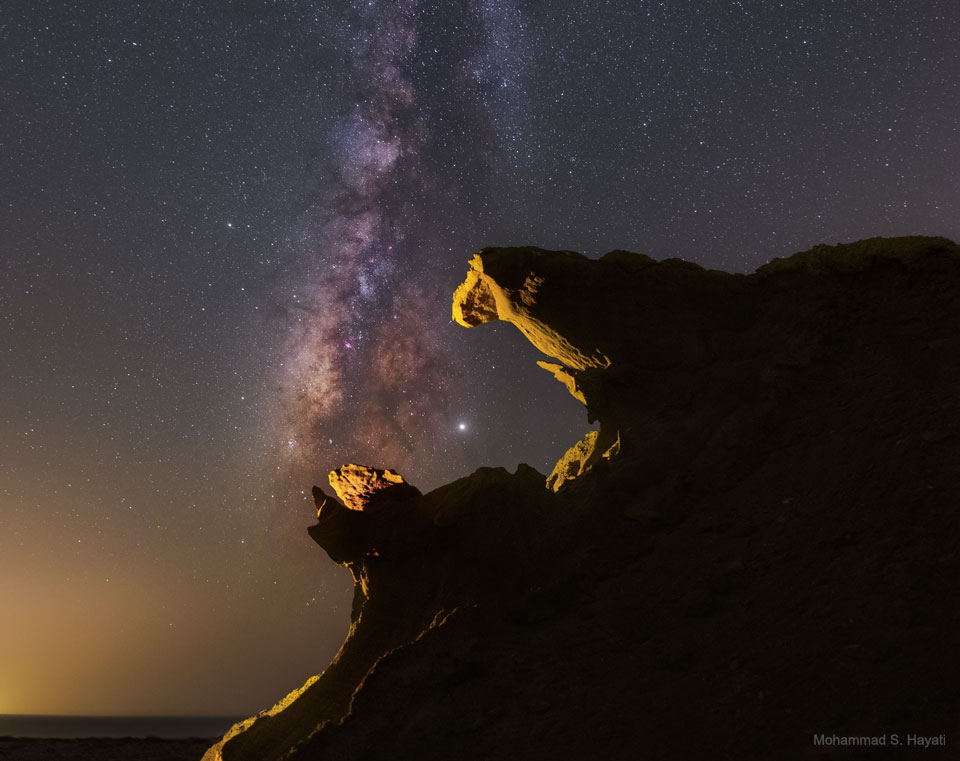
Our Sun Today

A Total Solar Eclipse Reflected
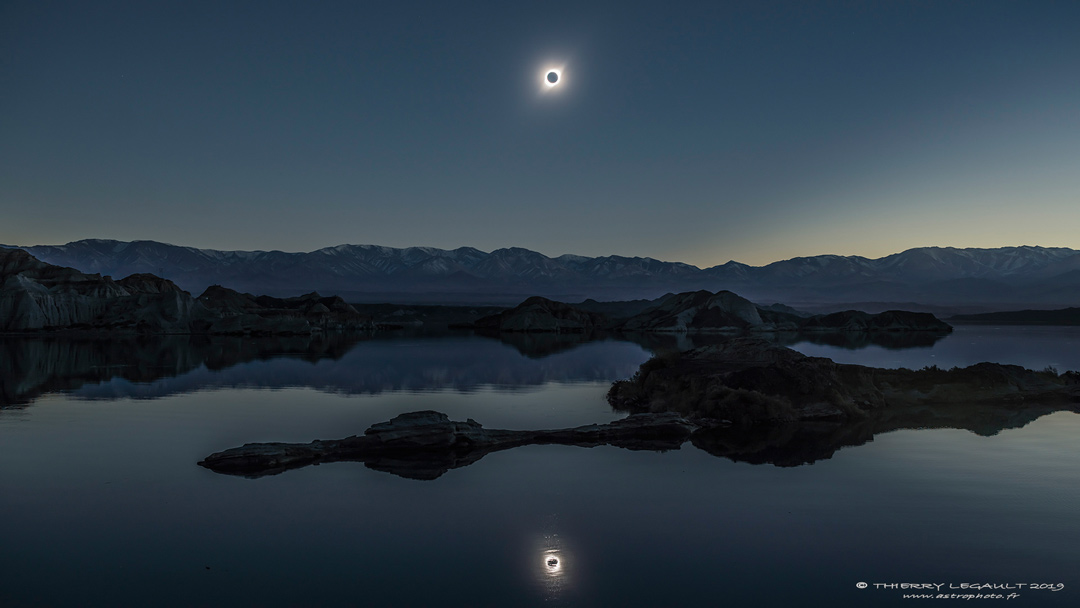
Rumors of a Dark Universe
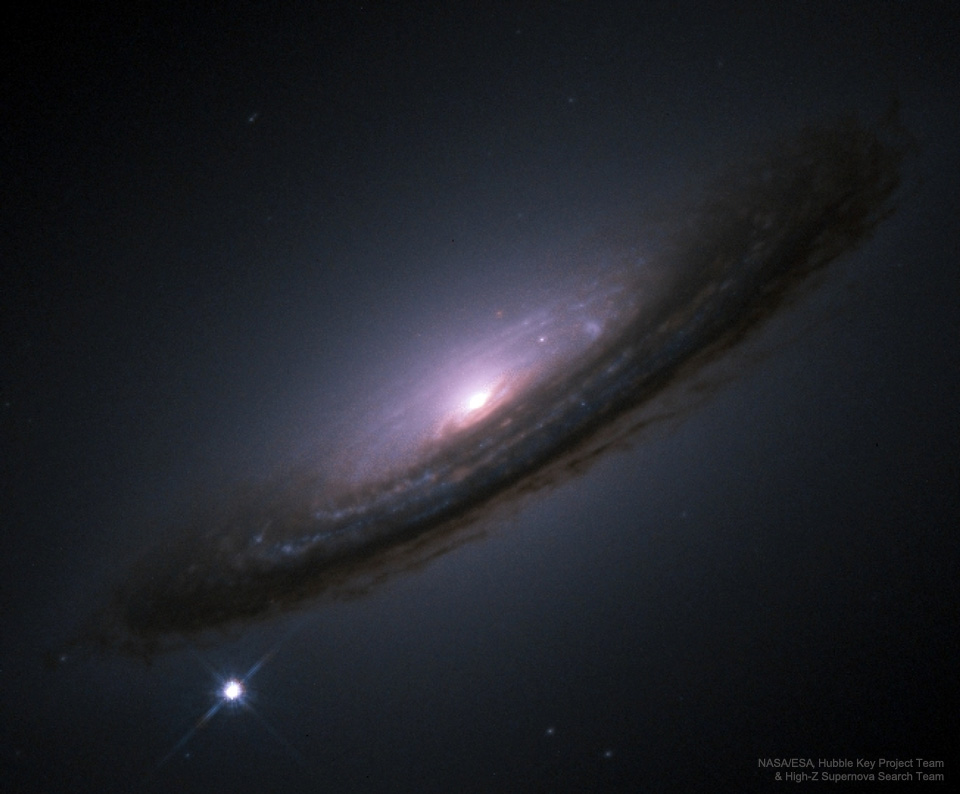
Dr. Oz Examines CBD: Here’s What You Need to Know
Look the patient in the eye. Empathize, but be honest. Speak clearly.
These are some of the most basic tenets of good bedside manner, and Dr. Mehmet Oz possesses them all. Except in this case, he’s looking squarely into the camera as he delivers the good news first.
“Here’s my thought,” Oz says of CBD. “It could work. I’m hearing from too many of you right now that are getting benefits.”
And then there’s the bad news. The industry is young. It is, at this point, mostly unregulated. Oz and his team have found that a certain number of the products currently on the market do not possess the amount of CBD that they claim. Others possess more psychoactive THC than they are supposed to. One product Oz’s team investigated actually contained a strain of dangerous E. coli.
He’s not down on the potential of CBD, exactly. Oz just wants to make sure patients know what they’re getting, and for CBD to undergo further testing, before he is ready to fully endorse today’s most talked about supplement.
“There are some reputable companies, I suspect, that are beginning to get into the medical community,” Oz says. “But we have got to make this happen.”
This first checkup with Oz, just described, occurred last October, when he was joined on his nationally syndicated daytime show by Dr. Sanjay Gupta to discuss the state of the CBD industry. In the follow-up appointment, an interview with CBD Snapshot, Oz says that, frankly, his prognosis hasn’t changed much.
“Shockingly little work and research has been done, probably because of the regulatory environment,” he says. “But that’s all changed…. With the Farm Bill that passed [in December 2018] and other things that are occurring nationwide, the ability to do research in medical marijuana and CBD is dramatically eased. So you’re going to see more of it, and we’re going to be able to figure out the answer to the question: What works where?”
Oz, 59, is perhaps the world’s most well-known doctor. He is attending physician at New York Presbyterian – Columbia University Medical Center, and the author of seven New York Times best-sellers. He’s been named among Time magazine’s 100 Most Influential People, Esquire magazine’s 75 Most Influential People of the 21st Century, and as a Global Leader of Tomorrow by the World Economic Forum. He has won nine daytime Emmy awards for The Dr. Oz Show, which last year surpassed a decade on the air.
To succeed on the air for so long, Oz has always needed to take more than the clinical perspective. His relatability is his charm, and to be relatable, he has to come to his viewers—to take interest in the things they are interested in and talk about the things they are talking about. As often as not these days, they are talking about CBD. It’s not out of his realm. Oz has explored everything from preventing Type 2 diabetes and the importance of getting ample sleep to the best superfoods and tips for managing stress.
He may seem more open than a lot of doctors to the natural, holistic approach that many patients prefer. But that doesn’t mean he is any less concerned with efficacy.
Although the serving sizes and specific applications are still being researched to answer that “what works where” question, Oz says research has already shown that CBD has the potential to address inflammation, nerve cell life span, nausea, pain, appetite and sleep.
“And there are current studies investigating the efficacy of CBD in treating epilepsy, inflammatory diseases, anxiety, depression, drug addiction and schizophrenia,” Oz says.
For now, although the pathway to market and consume CBD has been opened by the 2018 Farm Bill, the U.S. Food and Drug Administration (FDA) has done little to clarify its position on the substance. The only FDA-approved drug with CBD as an ingredient is Epidiolex, a treatment for severe forms of epilepsy. That means that, like many naturally-derived remedies available today, the products you buy with CBD aren’t regulated by the FDA—yet.
With more and more people buying CBD, Oz recommends some common-sense guidelines to keep in mind.
“Just make sure you’re working with legitimate producers,” Oz says. “If you buy products and they don’t tell you specifically what’s in it, that’s a bad sign.”
He suggests choosing products that list the amount of CBD per serving. “A report from Consumer Labs finds products that list only ‘cannabinoids’ may contain some CBD, but you won’t have the precise amount. The products that list ‘hemp extract’ as an ingredient may have a fair amount of CBD, while those with the ingredient ‘hemp oil’ probably don’t contain very much CBD.
“So unless a friend of yours is using it with success or you can look on their label and see very precise information about what’s in it, you should be worried that it’s not made by a reputable person.”
It’s also worth keeping in mind that CBD can have negative interactions with certain medications, so you should always talk to your doctor before taking it. Oz suggests starting small: “Get as little as you can. Try it and see if it works. If it doesn’t, move on. If it does, keep going.”
Whenever the FDA formalizes its regulatory posture, Oz believes CBD will eventually become a common household remedy in the U.S. “I think that’s the case because it’s already a commonly used remedy in other countries,” he says.
He’s excited by the entry of more professional oversight as the potential of CBD is developed. New laws will allow for the research that lets doctors get smarter, helps patients learn and teaches teens to understand the differences between CBD from hemp and THC-laden marijuana.
“Recreational marijuana has big-time side effects,” Oz says. “It does tend to dull people. These are not just rumors.”
But CBD is not recreational marijuana or medical marijuana. Oz says this clear distinction frees up the medical community to answer questions around the best serving and application methods for various conditions.
“I predict that we’ll see an even bigger explosion in products that contain CBD,” Oz says. “The signing of the Farm Bill will open up the market for both research on CBD and development of personal care products that contain the CBD.
“As more professional groups get involved in doing CBD research, you’re gonna find more and more specific data as you have now on childhood seizures… that’s a good example of what could happen in areas of sleep, anxiety, depression—maybe weaning off addiction.”
This article originally appeared in the May/June 2019 issue of CBD Snapshot. Never miss a story; subscribe today!
The post Dr. Oz Examines CBD: Here’s What You Need to Know appeared first on CBD Snapshot.
from CBD Snapshot https://ift.tt/2GXfMZ1
Mimas in Saturnlight

Is CBD Safe for Children?
With the popularization of the story of Charlotte Figi—the little girl who successfully treated her symptoms of Dravet’s syndrome with cannabidiol (CBD) who has an entire hemp strain named after her—thousands of parents are exploring this cannabinoid as a viable treatment option for their children.
CBD has been touted as a panacea for everything from epilepsy to ADHD to autism, with many states green-lighting its use for children. But is it really safe? How do you decide on a CBD product for your child? What can it help your child with? How much CBD should you give them?
Here we explore the answers to these questions, but the information presented here should not be considered medical advice, and you should always consult a pediatrician before introducing your child to CBD of any kind.
Is CBD Safe for Children?
The first obvious question most parents have is whether CBD is a safe treatment option for their child, whether for a serious or chronic illness, or simply as supplemental wellness option.
The short answer is yes.
Despite some concerns by organizations such as the American Academy of Pediatrics (AAP) and the World Health Organization (WHO) about the recreational use of cannabis in children and adolescents, these organizations are revising their stance on the use of CBD and medical cannabis.
The reason for this change in consensus is largely due to an as yet limited but growing body of research that specifically investigates the use and safety of CBD in children. The results are promising, showing that well-monitored CBD usage may not only be effective for a variety of conditions, but also when administered correctly, it is also safe and well-tolerated by children.
One such example is a study published in Neurology that found that even increased servings of CBD oil in children ages 4 to 10 proved to be safe. Another 2017 peer-reviewed article also showed that, though there were some minor side effects such as changes in appetite, diarrhea and fatigue, compared to prescription drugs, CBD has a much better safety and side-effect profile. However, it’s noted that more and longer-lasting studies are necessary, as well as studies that focus on any potential hormonal effects in children.
CBD Products for Children
CBD products can come from a variety of sources and in many different servings, types and forms. There is still a lot to be learned about CBD as an alternative treatment, and which one product is best for your child will depend on a number of factors. If you are considering trying CBD as a treatment option, it is vital to discuss this with your doctor to help you make a decision that is in the best interests of your child.
To help you start the conversation, we’ve put together a short list of questions you can ask your doctor when talking to him or her about using CBD for your child.
1. Is prescription CBD oil an option for my child?
With pharmaceutically manufactured CBD such as Epidiolex hitting the market, getting CBD via a prescription might be an option for your child. Currently it has been FDA approved for use as a treatment for seizure control for children with Dravet and Lennox-Gastaut syndromes. Unfortunately, if your child suffers from another condition or is experiencing the side effects of chemotherapy, this may not be an option for you.
2. How can I choose a safe over-the-counter CBD product for my child?
Ideally, you should speak to your doctor about finding a CBD product that is right for your child and his or her symptoms. Resist the urge to go online and buy the first or most-raved-about CBD product. Look for high-quality, third-party laboratory tested products that are THC-free or low-THC, and ideally specifically formulated for use in children.
3. Will any of my child’s current medications negatively interact with CBD?
Again, it is important to speak to your doctor about possible drug interactions and CBD. There are some concerns about CBD being used with other anti-seizure medications.
Conditions That CBD Could Help Treat in Children
Although there is a lot of anecdotal evidence for using CBD to aid a wide range of children’s issues such as anxiety and attention-deficit hyperactive disorder (ADHD), epilepsy and autism spectrum disorder (ASD) are the most researched in children.
Epilepsy
CBD has been shown to have powerful anti-seizure properties, often being as effective at reducing seizures as anti-epileptic medications. The evidence from three different studies in children show that especially in Dravet syndrome and Lennox-Gastaut syndrome, CBD reduced all seizures by between 38 to 41 percent without many of the side effects of prescription drugs. Likewise, according to this survey of more than 155 physicians, CBD is now also increasingly being prescribed as a way to improve the quality of life of children with epilepsy.
Autism Spectrum Disorder
Although the research is new, CBD for ASD is showing promise in helping to reduce many of the symptoms that make living with this disorder so difficult. In this review, scientists found that CBD may be helpful in promoting pro-social behaviors while helping to reduce the symptoms of comorbidities such as sleep difficulties, ADHD and anxiety.
Research Is Ongoing
According to this comprehensive review in The Journal of Pediatric Pharmacology and Therapeutics as well as this one published in Pediatrics, researchers reported a number of cases in which CBD oil has been documented to help children suffering from a range of medical conditions. These include the following:
- Behavioral symptoms associated with ADHD
- Other forms of epilepsy and drug-resistant epilepsy
- Perinatal brain Injury
- Neuroblastoma
- Chemotherapy-induced nausea and vomiting
CBD Serving Sizes for Children
A major issue when it comes to CBD servings, regardless of age, is that every CBD product comes with different potencies, ingredients and therapeutic compounds, and everyone metabolizes CBD differently—there is unfortunately no known universal dose. Another issue facing parents who are considering CBD for their child is that serving size recommendations are created with adults in mind.
Your child’s pediatrician or doctor can help you find a serving size that’s safe and effective for your child through a kind of trial-and-error methodology called dose titration. During this process, the amount of CBD administered starts off low (usually around 0.5 mg CBD per pound of body weight, split across three doses per day), and is then gradually increased over several days or weeks. During this time, your child’s physician will monitor symptoms and improvements to help estimate the optimal dose for your child.
Although CBD is increasingly considered to be an effective and safe treatment option for a variety of diseases, research specifically aimed at investigating these in children is still limited. Always speak to your child’s physician before using CBD for your child and try to work with him or her during treatment. Similarly, always be on the lookout for side effects such as diarrhea or a loss of appetite, and evaluate the side effects carefully in order to decide whether they’ve become severe enough to warrant discontinued use.
The post Is CBD Safe for Children? appeared first on CBD Snapshot.
from CBD Snapshot https://ift.tt/2LWywfe
Chamaeleon II Dark Cloud
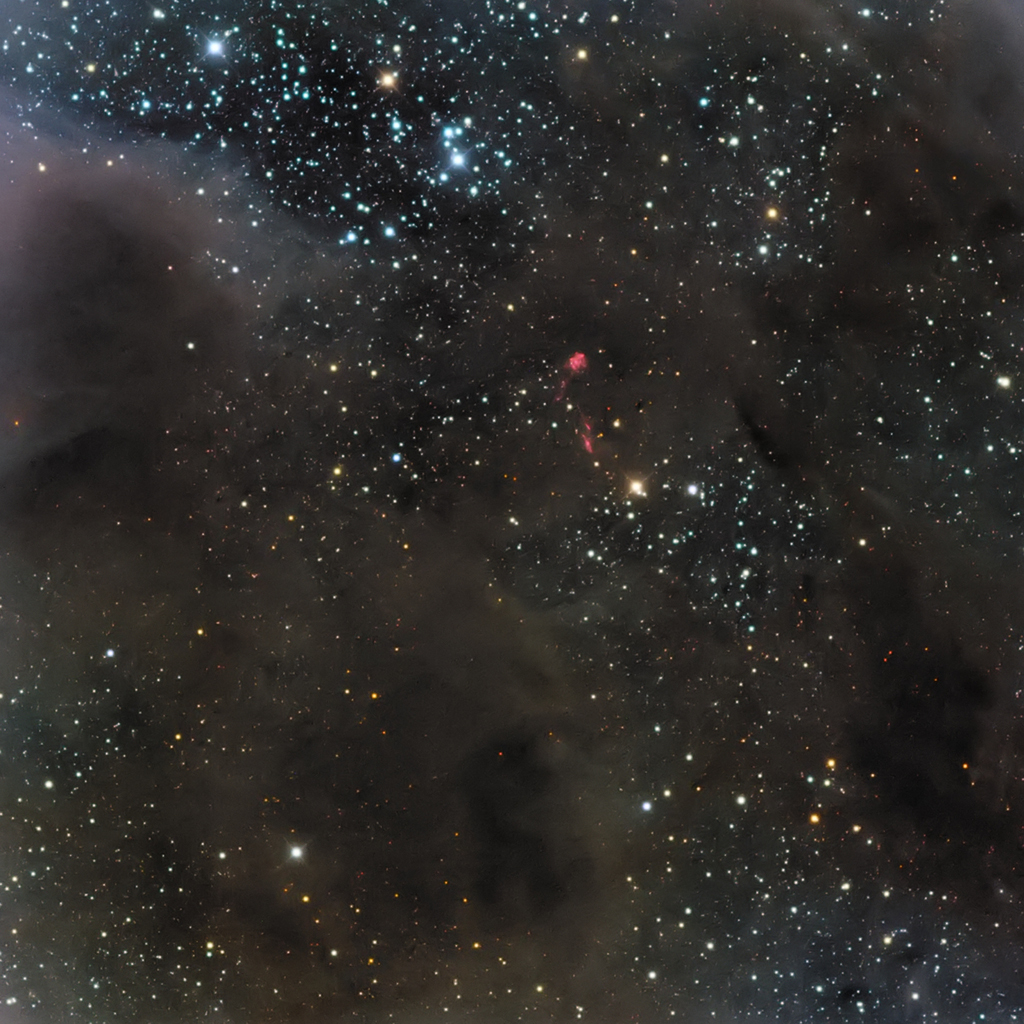
Colonel Raja Chari: NASA Astronaut Candidate
